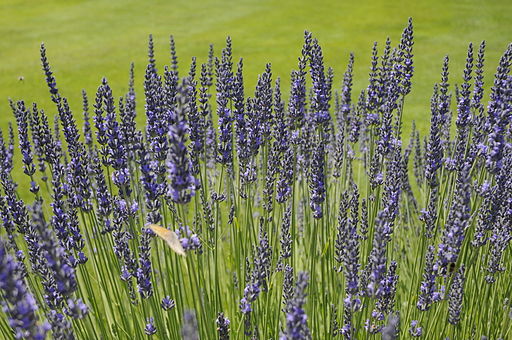Lavender has to be one of the most popular of garden plants. Highly versatile, lavender looks the part in a traditional cottage garden setting but is equally at home in a more contemporary garden design. Late summer is the time to increase stock of some of your favourite varieties by taking semi-ripe cuttings. Taking cuttings from lavender plants couldn’t be simpler. Choose a few healthy non-flowering shoots from this year’s growth and follow these few easy steps.
The best shoots to take are side shoots. Pull them away from the side of the plant, leaving a thin strip of bark attached or a heel still attached. The heel is important as this is where new roots will form. Trim off the heel with a sharp clean knife. Next, remove all lower pairs of leaves so that there is a clear piece of stem to insert into the compost. Dip the end of each prepared cutting into hormone powder. This will give the cutting a head start by stimulating the growth of new roots. You should be able to fit six cuttings into a six inch pot. Fill the pot with gritty compost and insert each cutting around the edge of the pot at equal distances. Water the compost well and cover the pot in a clear plastic bag to maintain a humid atmosphere around the cuttings. Place the pots in a warm place in shade rather than full sunlight. Once the cuttings have started to root (you can tell this by looking to see if any roots have appeared through the bottom of the pot), cut a few ventilation holes in the plastic bag. After a few more weeks you should be able to remove the plastic bag completely. Leave the cuttings to establish for a while longer and then transfer each cutting into its own individual pot. Once they start to put on growth, pinch out the top of each young plant to encourage the plant to bush out. The young lavender plants should put on a fair amount of growth before the end of the summer, but make sure you overwinter them in a greenhouse or cold frame as they will still be too tender to withstand the winter weather without protection.
Next spring your young plants should soon start to grow again and can be transferred into the ground or grown on in garden planters to be placed around the garden where their distinctive scent will delight once the sun warms up again.
The Author:
Jo Poultney is a RHS qualified gardener who has recently set up a business selling garden planters and garden related gifts via a website.
